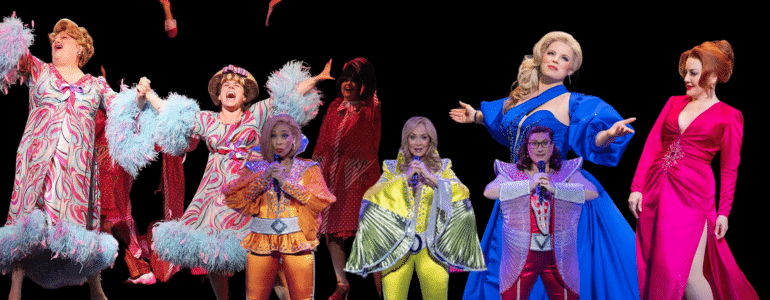Why you might have a harder time marketing your musical today than yesterday.
I read an interesting blog and an even more interesting book recently about how to introduce a new product to the marketplace. Now, granted, these publications were talking about the traditional business world, so their definitions of “products” were things like new cell phones, women’s sportswear, and soft drinks.
Me being me, I couldn’t help but wonder if their arguments could be extrapolated to musicals.
The conclusion of the blog/book was that it takes a lot longer than you think for a product to achieve “market penetration” in today’s world . . . on average more than five years.
Why does it take so long?
Check out this quote:
The consultant Jack Trout has found that American families, on average, repeatedly buy the same 150 items, which constitute as much as 85 percent of their household needs; it’s hard to get something new on the radar.
Of course it’s harder to get something new on the radar! First of all, Cialdini will tell you that “consistency” is one the prime motivators of human behaviors. And the longer a consumer retains that brand consistency, the harder it is to get them away from it.
But I glean a little something different from their conclusions that has a direct correlation to producing a new musical in the 21st century.
Let’s use Coca-Cola as an example.
Coke gets on the market way back in the day. And it achieves “smash hit” success. As it grows, it becomes more and more synonymous with the soft drink brand as a whole (In fact, some areas of our country refer to any soft drink as a “coke”). And the longer it’s run, the more and more marketing it puts out, and the stronger its brand becomes.
In other words, the Coca-Cola brand is bigger and better today than it was ten years ago.
Enter a new soft drink in the market . . . let’s call it Schmoka-Schmola.
Schmoka-Schmola doesn’t just have to be good. It has to be fantastic (or more unique). And, it has to be even better if it was introduced today rather than if it was introduced ten years ago, because it’s going up against a competitor whose brand is stronger today.
In the last twenty years, we’ve birthed some Coca-Colas.
Phantom is one of them. The Lion King is one of them. Wicked is another.If you’re a new musical coming into the market, you’re staring at several monster brands that pull a huge percentage of audiences looking for a Broadway musical when they come to town. How can you compete with those brands?
These long runner super-sized soft-drink-style brands make it without a doubt much harder to introduce a new show to today’s theatrical market.
Need some proof?
I dug into the Broadway archives over the weekend and calculated the average run of new musicals that opened in the years 1994-2003 and compared it to the average run of shows that opened from 2004-2013. If the average run in the earlier decade was longer than the latter decade, then that would prove some more challenging marketing terrain, right?
Here are the results*:
- The average run of new musicals that opened from 1994 – 2003: 449 performances
- The average run of new musicals that opened from 2004 – 20013: 376 performances
The conclusion:
- New musicals that opened in 1994-2003 ran 19% longer than new musicals that opened in the following decade.
Pretty significant, don’t you think?
The Wickeds of our world are musical theater brand superpowers. And we’ve never, ever, seen anything like it on Broadway before.
So how do you compete with them?
You can’t.
You don’t break into the soft drink market trying to duplicate Coke. And you don’t break into the musical market trying to be Phantom.
So don’t even bother trying.
Just produce/write/create the most unique theatrically thrilling experience you can, with an economic model that can exist knowing that the above brands eat up a lot of ticket buyers.
Being different and being smart is what will allow your show to survive.
* One note about the stats. Obviously shows that opened in the first decade have an “average length of run” advantage since there are more years after it than shows that opened in the second decade. So to even the playing field for the two decades, we only counted the # of performances that occurred within that decade. While the numbers may be slightly skewed by shows that opened earlier/later in the decades, using this form of analysis made for the closest decade-to-decade comparison possible.
Want to learn more about how to Market your show? Click here to join The Producer’s Perspective PRO and access my Training Course Library, Marketing Toolbox, and even get an hour of my time each month on my live Office Hours Calls!
(Got a comment? I love ‘em, so comment below! Email Subscribers, click here then scroll down to say what’s on your mind!)
– – – – –
FUN STUFF:
– Learn the three fundamentals of Broadway Producing. Click here.
– Do you subscribe to the blog? Get this blog in your email every night at 8 PM. Sign up here.
– Win 2 Tickets to see Rock of Ages. Click here.
Podcasting
Ken created one of the first Broadway podcasts, recording over 250 episodes over 7 years. It features interviews with A-listers in the theater about how they “made it”, including 2 Pulitzer Prize Winners, 7 Academy Award Winners and 76 Tony Award winners. Notable guests include Pasek & Paul, Kenny Leon, Lynn Ahrens and more.

















